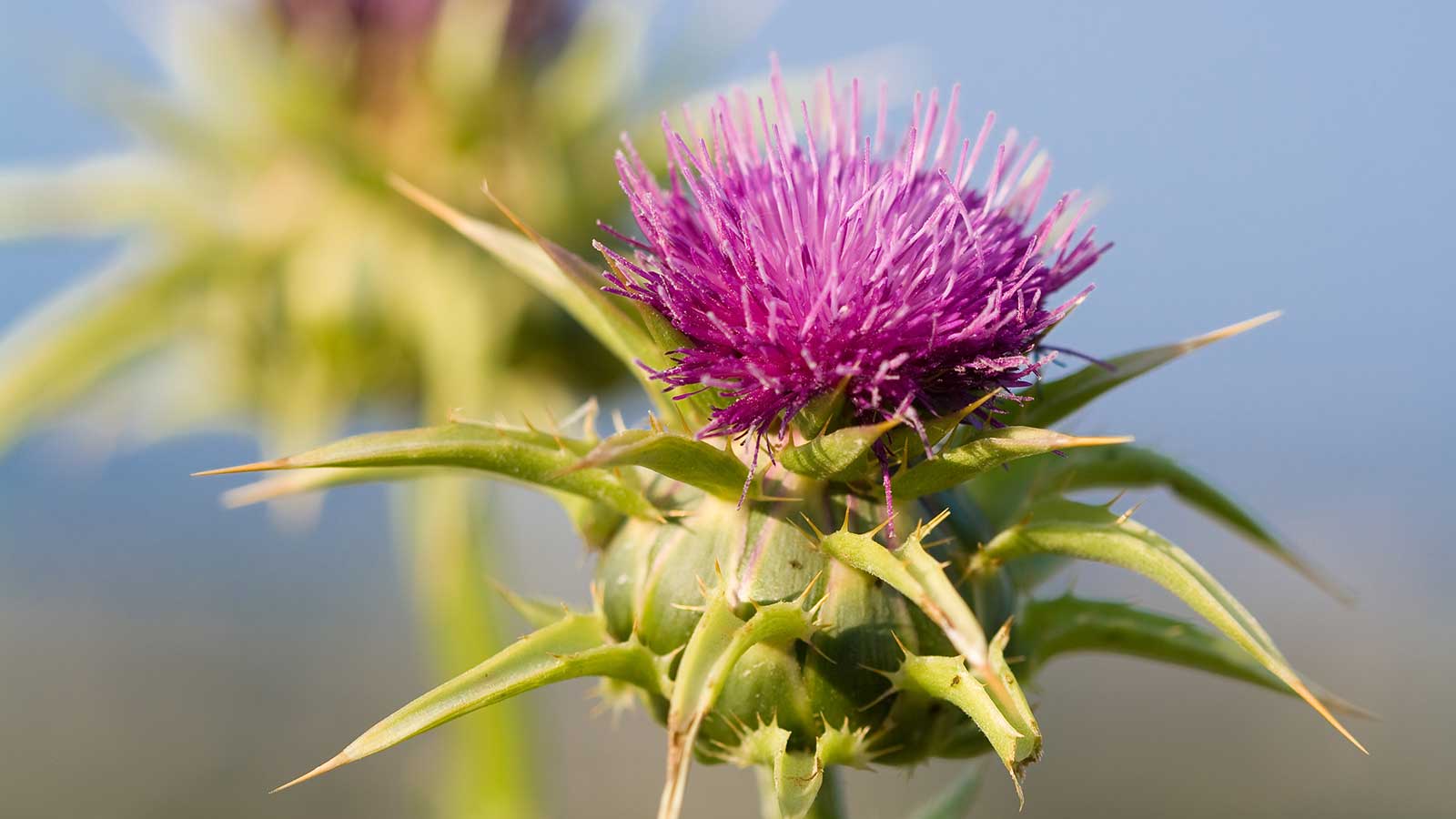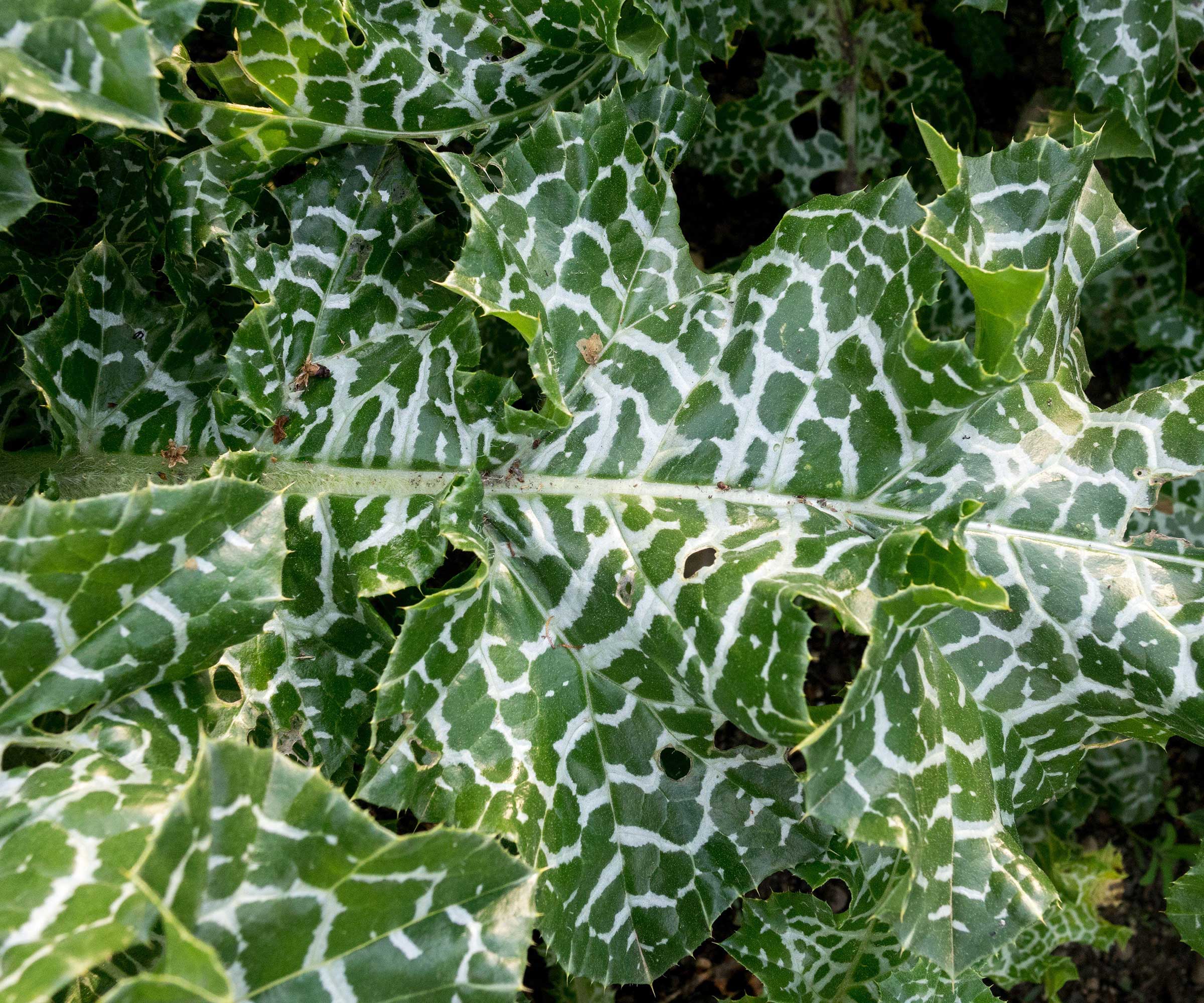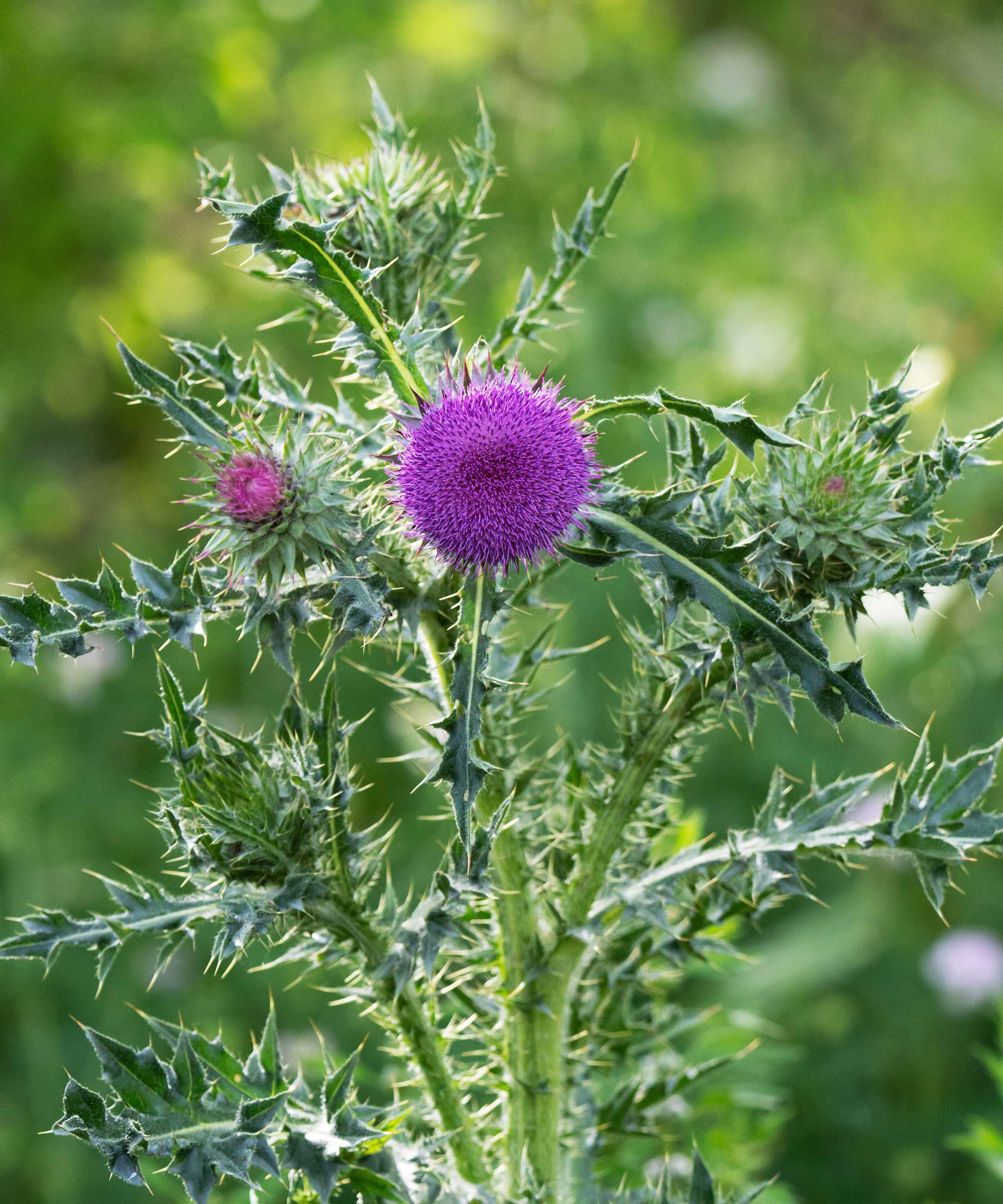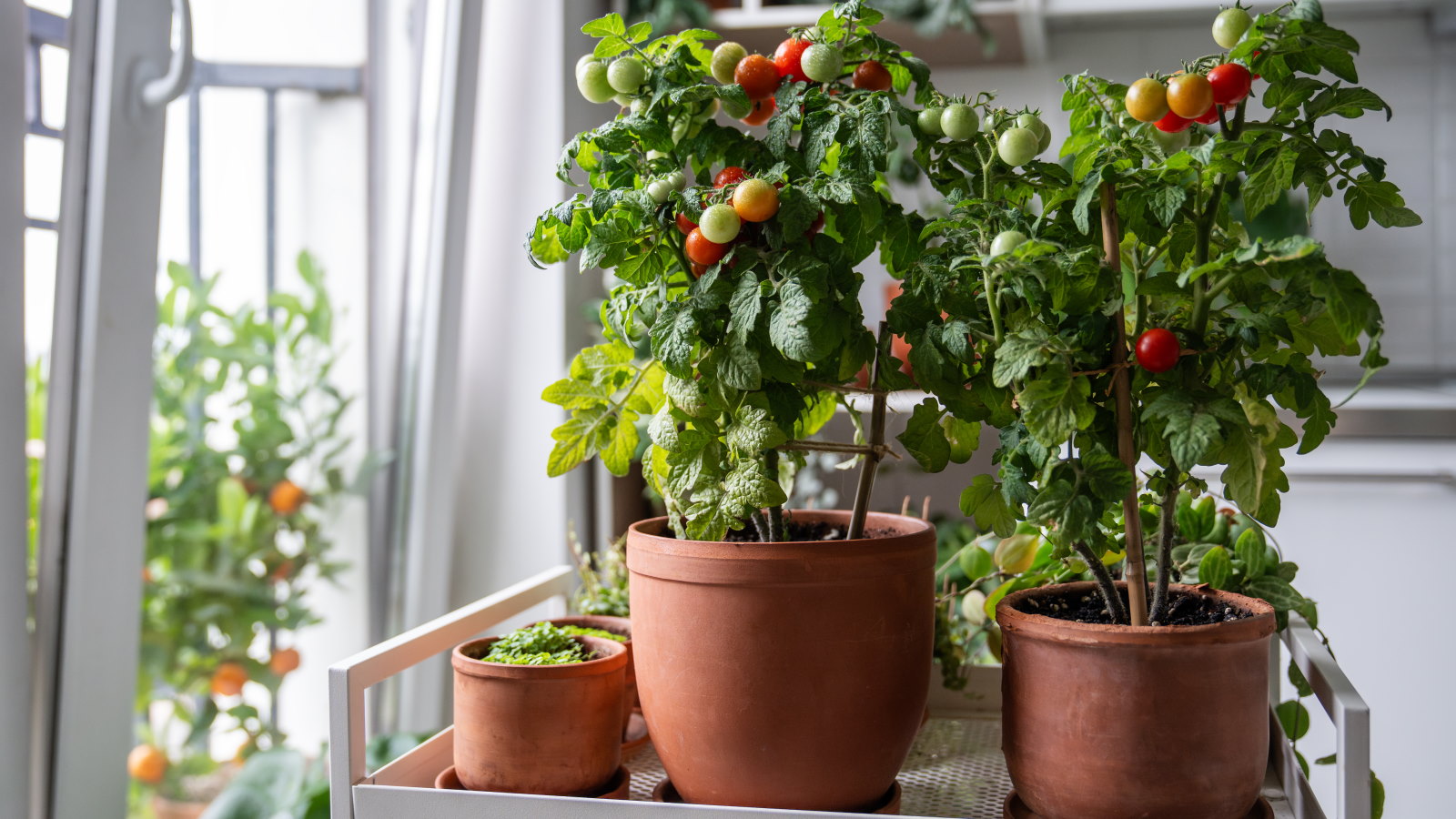How to identify and get rid of milk thistle – gardening experts reveal ways to tackle this spiky weed
Eradicate milk thistle from your backyard for good with this advice, including non-chemical solutions


The purple flower heads may look pretty, but don't let that fool you. Milk thistle (Silybum marianum) can be a pain if it's growing in your yard.
It's non-native and can be an invasive plant, as Keri Wilson, horticulturist and writer for Garden Media Group, points out, noting that it's classified as a noxious weed in several states. It spreads by seed that can remain viable for years, she adds, and 'has the potential to destroy an ecosystem and create a monoculture'.
Thankfully, many of the classic ways to get rid of weeds will work on this interloper – including more natural options. Below, you'll find plenty of advice from gardening professionals to get this plant under control.

These plants have distinctive markings on their leaves
How to identify milk thistle
Milk thistles' large, spiny, dark-green leaves have white marbling, which is where the plant gets its common name from, explains Amy Enfield of ScottsMiracle-Gro. 'The plant is large – up to six feet tall,' she says. 'It blooms from late spring to early summer with a single pinkish-purple flower per stem.
'All parts of the plant have sharp spines, with the spines on the leaves being up to half an inch long. Once the plant flowers and sets seed, it dies.'

Keri Wilson is a dedicated horticulturist and writer for Garden Media Group, where she explores topics on plants and plant issues. With a strong passion for native plants and the preservation of natural ecosystems, Keri brings her expertise and love for nature to every piece she writes. She holds a degree in horticulture from Oklahoma State University.

Amy has 30 years of experience in the lawn and garden industry and has been with ScottsMiracle-Gro for 12 years. She has a BS and MS in Horticulture from Michigan State University and a PhD in Plant & Environmental Sciences from Clemson University.
How to get rid of milk thistle

Milk thistles grow long taproots
While it can be somewhat labor-intensive, it's possible to remove these deep-rooted weeds by hand. Craig McManus, founder of McPlants and host of The Garden Question Podcast, recommends pulling or digging them out before they establish. 'Wear gloves. Thick gloves,' he cautions.
Keri also says you can treat them with vinegar or boiling water. If you opt for either of these methods, be careful not to splash any nearby plants that you want to keep.
Timing is important, as Amy highlights. 'You need to control it before the plant has an opportunity to flower and set seed.'
For stubborn infestations in flower beds, you may want to opt for something stronger. Amy recommends using a non-selective weed control product, like Ortho® GroundClear® weed and grass killer (available from Amazon), which 'can effectively kill milk thistle down to the root.' Apply it on a calm day, she says, following the directions on the label, and protect desirable plants from coming into contact with the product. 'For best results, treat milk thistle plants when they are young and actively growing.'
Top tip: 'Always avoid composting any part of milk thistle,' warns Craig. Instead, he recommends bagging up the plant and sending it to landfill.

These durable gardening gloves from Oizen will help protect your hands against thorns, and are touch-screen friendly.

Over the past 40 years, Craig has grown McPlants from a garden center in Douglasville, Georgia, into an award-winning design-build company. Specializing in residential projects, McPlants is known for blending art, science, and sustainability to craft outdoor spaces that are as beautiful as they are functional. Craig is also the voice behind the award-winning podcast The Garden Question and a member of the National Garden Bureau.
FAQs
How can you get rid of milk thistle growing in a lawn?
'Applying a weed-control product containing the active ingredients 2,4-D or triclopyr should provide control when applied to actively growing plants before they have flowered,' says Amy, noting to always read product labels before applying any control product.
For a more natural approach to killing these weeds (but not your grass), you could try repeatedly mowing them down. Not only does this prevent flowering, but it can also help deplete the root reserves over time so the plant eventually starves, Amy says.
How can you prevent milk thistle from growing in your yard?
Amy suggests adding a thick layer of mulch throughout garden beds. This will help prevent milk thistle seeds from sprouting by blocking their access to sunlight, she explains.
'Improve your soil health and avoid bare soil, which is very desirable to milk thistle,' says Craig, who also recommends promoting the growth of competitive, dense-growing native grasses, perennials, cover crops, and green mulches. You should be persistent in scouting for young seedlings, he adds.
'To prevent milk thistle in the lawn, regular lawn feedings (four times per year) is key,' Amy notes. 'A thick, dense lawn is better able to crowd out weeds before they can become established.'
If you're looking for advice on how to get rid of dandelions and creeping Charlie, too, our dedicated guides will help.
Sign up to the Homes & Gardens newsletter
Design expertise in your inbox – from inspiring decorating ideas and beautiful celebrity homes to practical gardening advice and shopping round-ups.

Holly started writing about gardening five years ago, and she is a regular contributor to Homes & Gardens. She has also written many gardening features for Woman & Home and Real Homes, too. She has previous experience as a professional gardener, where she helped to plant and maintain private gardens. Holly has also looked after allotment plots over the years and loves to grow her own flowers and veggies from seed. In her spare time, she enjoys visiting local gardens, botanical drawing, and tending to her ever-growing collection of houseplants.
You must confirm your public display name before commenting
Please logout and then login again, you will then be prompted to enter your display name.
-
 Do cleaning products expire? Professional cleaners warn time could make them ‘less effective, and in some cases, irritating to use’
Do cleaning products expire? Professional cleaners warn time could make them ‘less effective, and in some cases, irritating to use’For the best results, it pays to stay on top of the timeline of your cleaning products
By Chiana Dickson Published
-
 7 of the best tomatoes for growing in pots - expert growers pick their top varieties ideal for large harvests from containers
7 of the best tomatoes for growing in pots - expert growers pick their top varieties ideal for large harvests from containersYou can enjoy bumper homegrown harvests in small spaces
By Drew Swainston Published